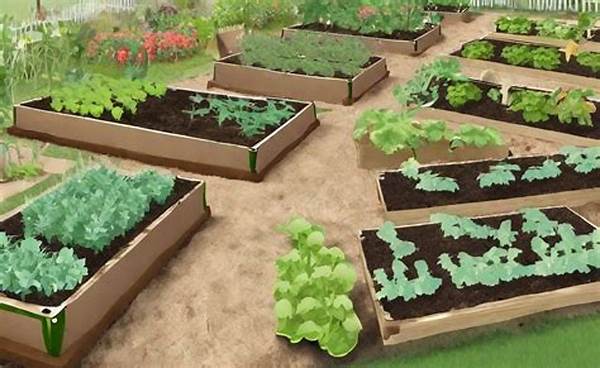Hey there, fellow green thumbs and sustainability enthusiasts! If you’ve ever dreamed of growing your own food and becoming more self-reliant, you’re in the right place. Today, we’re diving into the fascinating world of self-sufficient food production techniques. Whether you’re a seasoned gardener or a complete newbie, I’ve got some awesome tips and tricks to kickstart your journey toward food independence. So, grab a cup of coffee, get comfy, and let’s dig into the dirt of self-sufficient food production techniques!
Read Now : Family Resort Holiday Discounts
Why Self-Sufficient Food Production Techniques Matter
You might be wondering why self-sufficient food production techniques are all the rage these days. Well, picture this: you’re standing in your garden, surrounded by lush greenery, vibrant tomatoes, and juicy strawberries. You’ve become the boss of your own food chain, reducing your reliance on store-bought produce. Not only does this save money, but it’s also a step toward a more sustainable lifestyle.
Now, let’s talk about the environment. By using self-sufficient food production techniques, you’re reducing the carbon footprint associated with transporting food across long distances. Plus, it’s an opportunity to grow organic, pesticide-free produce that’s not only healthy but also kind to our planet. And guess what? Gardening can be incredibly therapeutic, allowing us to de-stress while connecting with nature.
Lastly, self-sufficient food production techniques foster a sense of accomplishment. There’s nothing quite like harvesting your own veggies or herbs for dinner. It’s a true testament to your hard work and dedication. Plus, it’s a fun way to involve family and friends in a rewarding project. So, whether you have a spacious backyard or just a small balcony, there’s always a way to start your self-sufficient food journey.
Simple Steps to Implement Self-Sufficient Food Production Techniques
1. Start Small: Begin with a few easy-to-grow plants. Radishes, basil, and lettuce are great options for beginners dipping their toes into self-sufficient food production techniques.
2. Compost Your Waste: Transform kitchen scraps into nutrient-rich compost, a key component of self-sufficient food production techniques, to nourish your plants naturally.
3. Collect Rainwater: Harvest rainwater in barrels for irrigation. It’s a sustainable practice that’s essential in self-sufficient food production techniques.
4. Companion Planting: Mix and match plants that benefit each other. This natural pest control is a cornerstone of self-sufficient food production techniques.
5. Rotate Your Crops: Ensure soil health by rotating crops seasonally. It’s a clever strategy within self-sufficient food production techniques to maximize yields.
Exploring Advanced Self-Sufficient Food Production Techniques
Once you’ve mastered the basics, it’s time to explore some advanced self-sufficient food production techniques. Hydroponics and aquaponics are systems that have intrigued many modern gardeners. Imagine growing plants without soil while integrating fish farming. It’s like having a mini ecosystem in your backyard!
Consider permaculture as another avenue. This technique involves designing your garden to mimic natural ecosystems, creating a self-sustaining environment. Focus on perennial plants and functional landscapes, which require less maintenance and offer a continuous yield. Plus, using local biodiversity can boost resilience and productivity.
Lastly, the no-till gardening method is worth trying. By minimizing soil disturbance, you maintain soil structure and enhance microbial life. This can lead to improved soil fertility and a bountiful harvest. These techniques, while more advanced, can be incredibly rewarding and further promote self-sufficiency in food production.
Tips and Tricks for Self-Sufficient Food Production Techniques
1. Create a Planting Calendar: Plan your garden by season, keeping in mind the growth cycle of each plant. This timeline is crucial in maximizing the efficiency of your self-sufficient food production techniques.
Read Now : Family-focused Nature Exploration
2. Use Natural Pest Control: Explore organic pesticides or plant pest-repelling herbs like lavender and mint. These are effective strategies within self-sufficient food production techniques for maintaining healthy crops.
3. Implement Vertical Gardening: Especially useful for small spaces, vertical gardening maximizes growing area, a smart technique in self-sufficient food production techniques.
4. Preserve Your Harvest: Learn methods like canning or drying to extend the shelf life of your produce. It’s an essential skill within self-sufficient food production techniques.
5. Join a Community Garden: If space is limited, community gardens provide access to shared plots, allowing you to practice self-sufficient food production techniques collaboratively.
The Joy of Learning Self-Sufficient Food Production Techniques
One of the most delightful experiences is witnessing the journey from seed to harvest. The connection you build with your garden becomes a cherished part of life. Self-sufficient food production techniques encourage patience, care, and observation. It’s all about understanding what each plant needs and responding to the subtle cues provided by nature.
As you explore self-sufficient food production techniques, remember that it’s okay to make mistakes. Every gardener has experienced a failed crop or unforeseen pest invasion. These moments teach resilience and problem-solving. Plus, there’s a humbling aspect in returning to nature, reminding us that despite our high-tech world, our roots remain in the earth.
A New Way of Life
Embarking on the adventure of self-sufficient food production techniques can lead to a transformative lifestyle change. You’ll start looking at the world through a greener lens, understanding the delicate balance required to produce food sustainably. As you become more self-reliant, you might even inspire others to join you on this rewarding journey.
Over time, these self-sufficient food production techniques may instill a deeper appreciation for every meal you create using ingredients from your own garden. Cooking becomes an art form, with each dish telling the story of hard work, dedication, and love for what you’ve grown. It’s a lifestyle that not only nourishes the body but also the soul.
Conclusion on Self-Sufficient Food Production Techniques
In summary, self-sufficient food production techniques offer an empowering way to take control of your food supply and contribute positively to the environment. By integrating these techniques into your life, you’ll embark on a journey toward independence and sustainability. As you cultivate your garden, you’re not only growing delicious food but also fostering a community that values self-sufficiency and eco-friendliness.
Remember, self-sufficient food production techniques are not just about the destination but the journey itself. Each step, whether small or significant, brings you closer to a more balanced and fulfilling life. So, ready your gloves, grab a spade, and let the adventure into self-sufficient food production techniques begin! Happy gardening!



